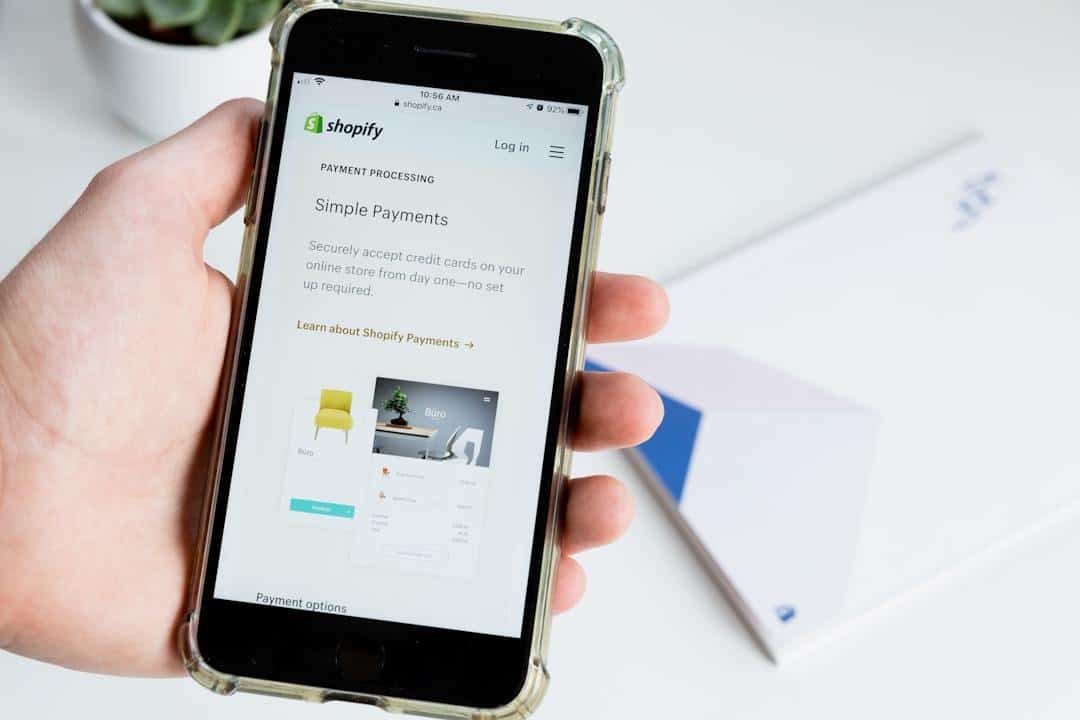Selling without the traditional way of procuring products is now possible these days. We can now earn money online by selling profitable digital products—no need for warehouse or commercial space! And I’ve got another guide to help you learn how to sell digital products online.
A good foundation is vital for a competitive edge. Join me and discover the ins and outs of this profitable online world.
With the continued rise of e-commerce, which is predicted to surpass $6 trillion in 2024, the demand for digital products continues to soar. So why not take it as an opportunity to learn how to sell digital products online and create convenient and accessible solutions that people need?
Anyway, here’s a step-by-step guide on how to sell digital products online. So, if you’re ready to start, let’s go! I’ve laid down a streamlined set of processes on how to sell digital products online, from choosing the right product and platform to marketing and customer engagement.
1. Choosing the Right Digital Products to Sell
How awesome would it be to be called an online entrepreneur? Very, right? Now, if you do want to gain and experience the profits and prestige of becoming one, the first step in how to sell digital products online is to have the very products you want to sell.
However, you can’t just select anything willy-nilly. You need to have the right digital products! After all, doing so is the key to being successful in this line of business.
And the first rule is to choose products that you know people will want to buy and that you can procure or manufacture easily.
Here are some good products to consider:
- Ebooks
- Courses
- Printable Templates
- Stock Photos
- Software
And don’t forget, to make the best choice, be sure to focus on your skills and interests. It also helps to research popular products in your niche, and examine your target audience and the demand for your potential digital products.
2. Creating High-Quality Digital Products
It’s kinda tough to choose, right? But that step is just the beginning. Remember that having selected the right products for your online service you’ll proceed to create and procure them, which is the very exciting part of this whole process!
But of course, it’s not all fun and giggles! To make money, you need only to offer high-quality content and digital products. Quality plays a critical role in providing the best revenue stream to your leads and potential customers.
To guarantee quality, invest time and effort into researching your niche, understanding customer needs, and identifying core and unique selling points. And if you don’t know where to begin, here are some tips to follow:
- Focus on Customer Problems: You need to have a helpful mindset. To do so, pay attention to a specific problem—what’s also known as pain points, in your niche or target demographic. Make your product specialize in solving that need, and not just sell products, no matter how specific. This is the very core of meeting supply and demand!
- Be Clear And Concise: You should know by now that most digital products are content-based. So, it’s definitely a must to use clear and concise language on your blog posts and striking visuals to make your content easy to understand and visually appealing. However, don’t sacrifice giving your product some personality!
- Simplify Complexity: Simplifying content is not disrespectful to your customers but a means to make your digital content more accessible. To get this down pat, break down complex topics into smaller, digestible chunks. Make it easy to use and understand—that’s key, especially if you’re selling online courses!
- Aim To Be Practical: People want to see and get results quickly; who doesn’t want to, right? So, provide practical examples and actionable advice that your audience can apply right away. Don’t bore them to death with theories and history alone!
- Scrutinize Through Tests: Errors, bugs, and glitches can make your products feel unprofessional and low-quality, which are the last things you need for your business. To prevent these, test your products thoroughly to ensure they’re as problem-free as possible. Your goal is to solve your customers’ problems, not create digital products that worsen problems.
- Perfect Your Brand And Design: It goes without saying that your products should have a professional look and feel that reflects your brand identity. Therefore, be sure that your marketing materials and products include the use of consistent colors, fonts, and imagery. Make your customers easily know your product in one glance!
- Iterate And Improve: You can’t do this alone, so you must take advantage of all the help you can get! Listen to your customers’ feedback and stay aware of market trends. The beauty of digital products is that they can be easily updated and refined to better serve your audience and stay ahead of the competition. Don’t get stuck with your initial offering! Innovate to sell online products that clients will love.
Never forget that the quality of your digital products will directly impact your sales and reputation as an online entrepreneur.
3. Setting Up Your Online Store

At this point, you must be feeling great as you already have something to sell and profit from. Unfortunately, they won’t sell themselves!
So, the next step on how to sell digital products online is to have a place where you can sell them—here enters your online store.
Fortunately, setting up an online store has never been easier!
You don’t even need to write a single line of code as there are many e-commerce platforms that can get you locked and loaded after a few clicks and taps on your keyboard. Popular options include Shopify, WooCommerce, and Gumroad.
Some even offer a free trial, allowing you to test the waters, but of course, you can access exclusive features if you subscribe.
However, do remember that each platform has its own pros and cons, so consider the following factors to determine which one is best for your business:
- Ease Of Use: If possible, try e-commerce platforms for free—many offer such features. Test their interfaces to see which one is intuitive and familiar, allowing you to quickly set up your store and start selling. To see if a platform’s easy to use, try to navigate it for one hour. If you don’t understand anything after that short amount of time, reconsider.
- Payment: Most popular platforms offer built-in payment processing. Ensure the platform you choose supports the most popular online payment systems like PayPal or Stripe. Thankfully, most popular platforms out there come with these options by default.
- Customization: To stand out from the rest of the crowd, choose a platform with robust and intuitive customization features! Ensure these features are easy to use so you can personalize your store effectively and quickly. And don’t forget to choose one that offers many designs, templates, and options! Check if they have marketing tools as well so that you can easily create sales funnel for your products.
- Support: Even with an easy-to-use platform, you may encounter roadblocks, which can be challenging if you’re not tech-savvy. So, choose a platform that provides reliable help and support when you need assistance. A good test of a platform’s support quality is to check if they have phone support. Call them, and see how long before they answer the call! If they take a while, well, reconsider.
- Pricing: And, of course, pricing matters—your profit boils down to it, after all. So, compare the costs of different platforms, including transaction fees and monthly subscriptions, to find one that fits your budget and estimated profit margin.
Whew! That’s a lot to take in. If you don’t exactly know what to do in order to test the platform or start your online store, here are the most common steps you need to go through:
- Create An Account: Set up your store’s basic information, such as the store name and contact details. The information the platform requires may vary.
- Upload Your Products: Add your digital products and create product descriptions that highlight their features and benefits. Take some time in crafting good descriptions and copies for your products, as they may make or break your business!
- Set Your Prices: Indicate the base price you want for your products. Some platforms may also provide you with options to set discounts and promotional prices.
- Customize Your Store’s Design: And remember to choose a theme and add your logo! Be mindful of your colors and fonts to make sure they match your brand or branding—graphic design is vital here!
- Set Up Payment And Delivery Options: The biggest frustration online sellers and buyers have is the checkout option. More often than not, most struggle on payment and shipping pages (more about shipping/delivery later), which can ruin a sale. So, make sure that your checkout page is easy to navigate and has clear instructions!
Make sure to familiarize yourself with these steps as they’re core to setting up an online store properly. Take your time in learning these steps and knowing which information you need to be always at the ready to make setting up your online store a breeze!
4. Pricing Your Digital Products

This next step can be nerve wracking! And this is especially true if you’re a customer-first kind of person. But you can’t escape this as the money you’ll earn and your success hinge greatly on your products’ prices!
With this aspect, put in mind that your main goal will be is to find the sweet spot that makes your customers feel they’re getting value for their money while you maximize your profit.
While I have already brushed upon this part of the process previously, it deserves its own section. After all, as I have said before, your pricing can easily make or break your product and business.
So, without further ado, here are the steps you can follow to deal with pricing your digital products:
- Check The Competition: Don’t hesitate to check your competitors! If you can, try to get a sample of their product and see if the price they set is worth the money. If they’re truly worth the money they ask for, then set your baseline price based on their prices!
- Consider Your Target Audience: Aside from the competition, you must also get in touch with your customer base. Gauge and get a feel for how much they’re willing to pay for your product. A quick way to get a good estimate is to ask friends and family first about how much they’re willing to pay for your digital wares.
- Factor In Your Time And Effort: Whether you’re a solopreneur or hired a team to help you out, factor in the time and effort all of you will invest in creating and selling your product at a price. Never forget that your profit should reflect the value of the time you spend and the amount of money you can live off with this business.
- Offer Tiered Pricing: If your product’s quality demands a high price—you’ve done well if that’s the case—you must provide budget-friendly options for some of your customers. Get started with having a budget-friendly package and a premium package for customers who prioritize quality over price.
- Test And Adjust: Lastly, don’t be afraid to adjust your prices. Be willing to experiment to find the price point that brings you the most profit and happiness to your customers. Basically, continuously optimize your pricing strategy. Find the right balance!
Achieving the perfect balance between value and profitability can be very very tough and risky—that’s how businesses are—but it’s essential for long-term success.
5. Marketing Your Digital Products

At this point, your hands are wet, and you’re already deep in this. You’re only a few steps to sealing the deal, and this time, you’ll need to deal with marketing to get things going.
While personally marketing for your own products can be a scary thought, relinquish it.
You just need to keep in mind that the goal here is to get the word out about your product and your business. There’s no need to shove your product into everyone’s throat.
Just let them know that you exist, and the quality of your product will do the selling for you.
With that said, here are some actionable tips for you to overcome this hurdle—if that’s what you think it is:
- Social Media Marketing: Social media is central to advertising and marketing—it’s been like that for years. You have platforms like Facebook, TikTok, Instagram, and Twitter you can take advantage of as they’re prime places for marketing. To get started, perform soft marketing by creating engaging content, running targeted ads, and interacting with your followers to build brand awareness and drive traffic to your website.
- Email Marketing: Although it may be considered traditional by many veterans in the field, email marketing still works. Begin by building an email list of subscribers interested in your niche and send them regular newsletters featuring your latest products, special offers, and valuable content. While I said that it still works, remember that the email crowd can be a tough sell, considering many people loathe opening emails nowadays.
- Influencer Partnerships: Celebrities aren’t the only ones with advertising pull! You now have social media stars, YouTube reviewers, and popular people on various platforms on the web! Take advantage of this and collaborate with them to promote your digital products to their followers.
- Content Marketing: Content marketing is the de facto marketing strategy nowadays as it’s cheap and effective. Content marketing requires you to provide valuable, informative content related to your niche to attract leads and subtly guide them to buy your product.
- Paid Advertising: Unlike the other strategies, paid advertising requires constant financial investment. However, it guarantees more exposure for your product and can drive immediate results. Not to mention that their effectiveness is easier to track, monitor, and analyze.
By the way, as you market your product, focus on providing value to your audience and building genuine relationships with them instead of just selling products. Create high-quality content, engage with your followers, and consistently promote your digital products across multiple channels.
6. Managing and Delivering Digital Products

Just like with physical products, you need a place to store your digital products and a method for customers to access and acquire them. However, unlike physical products, you don’t actually ship digital products. Your customers need to download them.
For non-technical people, they may have a difficult time wrapping their heads around this. If you’re one of them, you need to pay attention to the following:
- Choose A Reliable Hosting Platform: Select a hosting platform that can handle traffic and provide a secure environment for your digital products. They’re basically your online warehouse where you upload your digital products and store. Popular options include Amazon S3, Google Drive, and Dropbox.
- Set Up Automated Delivery: Automate the delivery process to save time and ensure that your customers receive their products immediately after purchase. Tools like SendOwl or Gumroad can handle delivery and generate download links. While this sounds basic, it’s actually a complex process that requires third parties like them as you don’t want everyone to have accidental access to your content without paying.
- Provide Clear Instructions: Despite the internet being widely available for decades now, not all are tech savvy and can understand how things work, particularly when it comes to digital products. So, include clear instructions on how to access and use your online wares. This will help reduce customer support inquiries and improve the overall user experience.
- Offer Customer Support: Also, even if you have clear instructions attached to your products and store, still be prepared to handle customer support inquiries related to your digital products. Provide multiple channels for customers to reach out, such as email, live chat, or a dedicated support forum.
- Keep Your Products Up To Date: And always remember to regularly update your digital products to fix bugs, add new features, or improve the content. This ensures that your offerings remain relevant and valuable. Again, this is to prevent customer support inquiries, complaints, or bad reviews.
- Monitor Analytics: Fortunately, you can track the performance of your digital products using analytics tools. These tools will let you know if your products are doing well and find areas for improvement. Monitoring analytics will help you understand which products are popular and make data-driven decisions to optimize your sales.
- Implement A Secure Payment System: While most platforms may have gotten this done for you, you still need to ensure that your payment system is secure and reliable to protect your customers’ information and build trust.
A seamless experience for your customers in your store is crucial to build a loyal customer base. Doing so can raise your chances of having a steady stream of income and grow your online business over time.
7. Understanding Legal Considerations and Intellectual Property

We’re already on the final stretches! And as you might frown upon reading the word legal, you must deal with it as well.
Remember that aside from dealing with pricing, delivery, marketing, and platform when selling digital products, it’s crucial to protect your intellectual property and comply with legal requirements.
You wouldn’t want someone else claiming your product as their own and profiting from it after all!
To get through this, you need to understand and take care of the following:
- Copyrights: Register your digital products with the appropriate government office to control how they are used and distributed. Often, you need to get in touch with a copyright office. Thankfully, the process involved in this is much simpler now than before!
- Trademarks: Just like with copyright, you also need to protect your trademark and brand—you got to make sure no one takes advantage of your good reputation! To do so, protect your brand by registering unique names, logos, or slogans associated with your products to prevent confusion and misuse.
- Licensing Agreements: And do note that depending on the type of digital product you’ll sell, you should specify the right licensing to show how customers can use your products. After all, some legal loopholes can get your products be shared and used with no consequences and profit to you! Common licenses include:
- Single-user
- Multi-user
- Site licenses
- Resale licenses
- Legal Compliance: Aside from licensing, copyright, and trademark, there are other legalities you need to take care of as well. So, be sure to follow applicable laws, including collecting sales tax, adhering to privacy laws, and meeting consumer protection regulations. And if you need to, consult with a lawyer specializing in intellectual property and e-commerce law. They can be of great help!
Never ever forget that legal issues can be expensive and detrimental to all types of business, and you don’t want that kind of headache. So, get your bases covered in this department as early as possible. It doesn’t hurt to be thorough!
8. Analyzing and Improving Sales

Another key aspect of this business that deserves a section of its own is analyzing and improving sales, which is equally important as the other steps after launching your digital product.
Do note that this can be a frustrating process, especially if your initial sales are low! What’s there to measure if there are no sales, right?
Anyway, remember that the key aspect here is to track key metrics like conversion rates, traffic sources, and customer feedback provides valuable insights. And to help you out in this aspect of the business, here are some tips to follow:
- Use Analytics Tools: Track website traffic, sales, and customer behavior to identify trends and make data-driven decisions. This is a bit complicated at first, but many platforms you’ll use along the way will provide you access to this helpful type of tool.
- Review Customer Feedback: This isn’t for the faint of heart, but you really need to regularly check feedback and reviews to identify common issues and areas for improvement. After getting your heart crushed by negative and crushing reviews, be strong and update your product or marketing strategy accordingly.
- A/B Testing: This is one of the most effective and oldest marketing tricks in the book. Some platforms even provide features to allow sellers like you to perform this tactic with ease. Basically, this can help you optimize conversions by testing different elements of your sales page, such as headlines, pricing, and calls-to-action.
- Experiment with Marketing Channels: Remember that social media and the rest of marketing channels aren’t the only places you should focus on. Test various marketing tactics and platforms to expand your reach and determine if they can be viable to let you earn more!
- Update Your Product: And again, continuously improve your digital product based on customer feedback and industry trends. I can never stress this enough!
Selling digital products can be tough, especially if you’re doing it alone. Fortunately, various tools and features can help you analyze and improve your products on the go to help you optimize your sales.
FAQs
How do I sell digital products?
You can sell digital products by creating an online store, leveraging online marketplaces (like Etsy), utilizing social media platforms to market, promoting your products, and building an engaged audience.
Can you actually make money selling digital products?
Yes, you can generate income from selling digital products, often even creating a passive income stream if your products gain traction.
What is the best platform to sell digital products?
The most suitable platform for you will vary based on factors such as your products, target audience, and personal preferences. Some great choices include your own website with a storefront or platforms like SendOwl, Etsy, or Amazon.
What are examples of digital products?
Digital products run the gamut and include things like ebooks and courses, website themes, stock photos and music, social media templates, printable art, and more.
Conclusion
And we’re done! Whew! While selling digital products can be a great way to make money online, it can take away a lot from you. But once you get the steps on how to sell digital products online, you can have a sustainable—and even automated—business.
It’s an exciting endeavor, I assure you!
So, get started with these tips I gave you and create valuable content that solves problems for your target audience! Whatever kind of product you choose to make and sell, I’m sure that you’ll have a great time learning and experiencing all of these things. Good luck!






